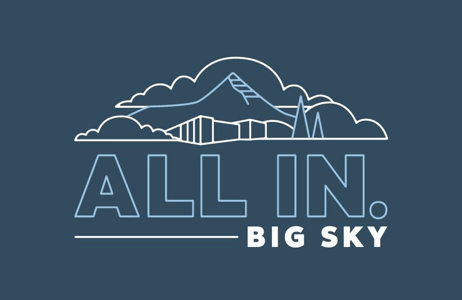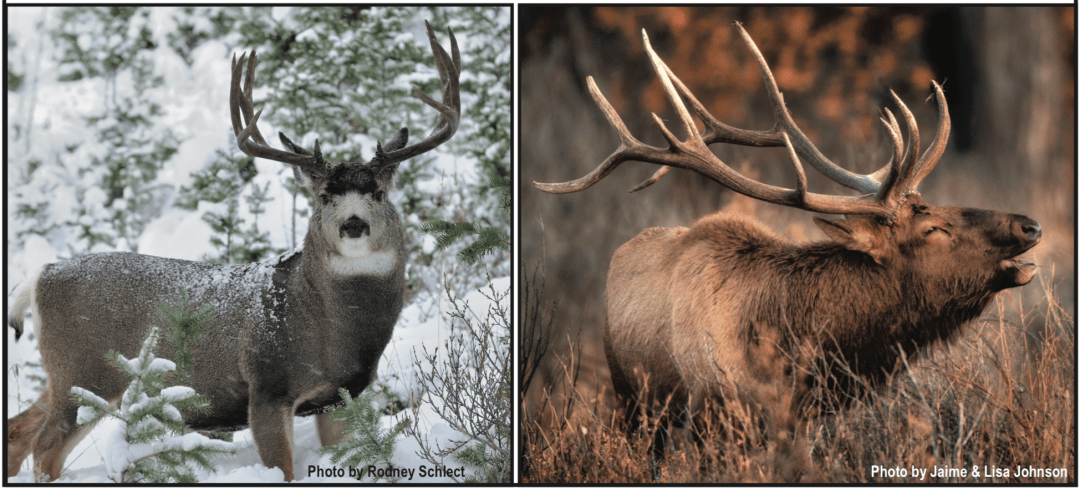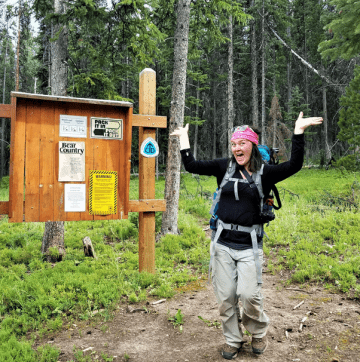Montana Ranchers Can Now Get Paid to Sequester Carbon Using Rotational Grazing Practices
With the help of key collaborators, the Western Sustainability Exchange is helping farmers adopt rotational grazing management plans that improve carbon sequestration by providing them with a way to sell carbon credits through NativeEnergy.
CO2, or carbon, is a dirty word these days–and for good reason. Due to a number of causes including the burning of fossil fuels and widespread deforestation, there is far too much CO2 being returned to the atmosphere, resulting in climate change. The US Energy Information Administration estimates that in 2017 the United States emitted 5.1 billion metric tons of energy-related carbon dioxide, while the global emissions of energy-related carbon dioxide totaled 32.5 billion metric tons.
Despite the grim outlook, there are ways of reversing the abundance of CO2, including sequestration, which is the process of capturing and storing atmospheric carbon dioxide. An entire marketplace has developed around CO2 mitigation that enables CO2 emitting industries to purchase carbon credits from businesses engaged in offsetting activities, such as the production of renewable energy through wind farms or biomass energy, as well as energy efficiency projects, the destruction of industrial pollutants or agricultural byproducts, reducing landfill methane, and forestry projects.
The price that the company pays for these credits is used to support projects and businesses that help sequester carbon. In general, a carbon credit gives the purchaser the right to emit one ton of CO2.
There is a voluntary carbon offset market, but some larger companies are required by law to purchase carbon credits to offset their carbon-producing activities in the so-called compliance market.
For the Western Sustainability Exchange, there’s no reason that the carefully managed, rotational grazing of livestock can’t also qualify for the carbon credit market.
“We have been working with ranchers to implement rotational grazing for about 25 years since we started. That was one of our founding principles: to manage land better through grazing animals,” Chris Mehus, ranching program director at WSE, told AFN. “Carbon credit broker Native Energy approached us about four years ago to discuss the concept of getting ranchers into a program that allows them to trade carbon credits and to get paid for using rotational grazing because of the carbon that it sequesters.”
In partnership with international carbon credit broker NativeEnergy, Syracuse University soil science organization Soils for the Future, and the US’ largest national park concessionaire Xanterra Parks and Resorts, WSE is helping farmers figure out whether implementing rotational grazing practices make sense for their ranches through the Montana Grasslands Carbon Initiative.
What’s Rotational Grazing?
Essentially, rotational grazing mimics the way that large herds of bison would migrate through North America’s grasslands centuries ago.
Rotational grazing involves controlling livestock’s access to pastures, allowing animals to graze in designated paddocks for limited periods of time. The livestock are rotated to fresh pasture before they graze the grass down to the ground. This provides the grazed pastures with ample time to rest so that the leaf matter can regrow. The more leaf matter a plant has, the more sunlight it can process through photosynthesis and the longer its roots will be. These root systems are key to maintaining healthy soils.
Using ruminant animals like cattle, sheep, and goats to manage grasslands also helps restore ecosystem balance as one type of forage is prevented from taking over and shading out other vital plant types. As they deposit manure more evenly through each pasture, it helps feed microorganisms in the soil that further enrich its health. Ensuring the presence of ample forage and allowing adequate rest also creates more habitat for wildlife.
If livestock are allowed unrestricted access to pasture, they graze it down to the ground exposing the soil and killing off their favorite forages entirely, allowing other forages to take over. Overgrazing is a major cause of plant destruction, soil compaction and erosion, and water pollution resulting from runoff.
“Higher stocking densities on pastures, shorter grazing periods, longer rest periods – all of those things equate to healthier plants, a greater plant diversity, and more plants on the soil surface, which equates to more roots in the soil, which means more carbon sequestered,” Mehus explains.
Certifying and Paying for Soil Sequestration
WSE has brought together various players to help pay farmers for making the transition to rotational grazing.
Using Soils for the Future’s computer modeling system that predicts the amount of carbon that can be sequestered through rotational grazing, NativeEnergy is certifying the predictions through the world’s leading program for the certification of GHG reduction, the Verified Carbon Standard. Xanterra has signed on as the first carbon credit purchaser for the program.
“There aren’t many business models that are higher risk than farming and ranching, so by nature, these ranchers are risk-averse. They’ve learned that you have to be very careful with your decisionmaking and your capital because you don’t have a lot of it to spend on improvements. Avoiding big risks is something that I think has been built into their thinking.” Mehus explains. “By offering them financial investment through this program, it gives them an opportunity to take this risk without having to use their own capital or borrow money.”
WSE works closely with each rancher through the enrollment process to create a rotational grazing plan that fits each rancher’s land and management goals. Any infrastructure needs including fencing, range riding, and water systems are included in the plan, as well as education about regenerative grazing.
Farmers can take one of two 30-year contracts: the first track offers immediate financing to help cover the infrastructure costs of following a rotational grazing plan, and the second provides a regular payment structure for ranchers who don’t need the upfront financial investment.
Although a three-decade commitment may cause some ranchers to balk, the timeframe is necessary for the carbon credit purchaser to know that its investment will yield enough carbon credits over the course of the project. Ranchers also have to keep records regarding their rotational grazing practices, including when animals are moved to a new pasture, how often they are moved, and how many days of rest a pasture had before it was regrazed.
In order to ease the management and recordkeeping burden, WSE has enlisted the help of two agtech startups, PastureMap and Maia Grazing that both provide a comprehensive software platform for rotational graziers.
“These are records that ranchers should be keeping anyway, but many of them have lifetimes and generations of experience that helps them intuitively understand the land, grass, and soil health. Putting more of that down on paper or in these digital tools can help others see the benefits of a more deliberate grazing plan, however,” Mehus explains.
In order to vet the project’s sequestration powers, the partners are conducting baseline monitoring on 165 sites throughout Montana to measure the current carbon baseline level in the soil. The samples will be sent to Soils for the Future’s lab to validate the model’s predictions.
So far, 34,000 acres have been enrolled in the program spanning four ranching operations.
A Major Tipping Point for the Livestock Industry?
For many conventional ranchers, switching to a rotational grazing system may seem overwhelming, especially when the ranch spans several thousand acres. Once a rotational grazing system is in place and the animals are trained to move to fresh pasture, however, the system is usually more efficient and less time-consuming compared to feeding grain year-round or feeding hay during winter.
“I think their hesitation is based on a misunderstanding of the potential of rotational grazing. Many of them feel that their energies are better spent elsewhere on their ranches such as irrigation improvement or farming hay fields,” Mehus says. “I won’t say rotational grazing is easy, but it’s less difficult than what they are imagining. And once they split up a few pastures with fence, add some water improvements, and move their livestock for a week or two, they start to see how easy it is and the benefits it provides. The cows learn that moving to new pasture means fresh forage and they practically move themselves once the gate is opened.”
To entice ranchers, WSE is also implementing an outreach campaign about the new opportunity including a rancher-oriented blog series called Ruminate on This. It’s also hosting ranch public ranch tours profiling the landowners who are already using rotational grazing and yielding serious benefits on their ranches – and pocketbooks – as a result.
NativeEnergy and WSE are recruiting additional carbon credit buyers including foundations, nonprofits, and businesses to buy the carbon credits through this program. The more carbon buyers WSE can recruit, the greater the number of ranchers that can participate in the program to sequester more carbon, and the healthier Montana’s grasslands will become.
WSE hopes to enroll 100,000 acres by this time next year. Although farmers can certainly adopt rotational grazing practices voluntarily, the added bonus of financial capital to help them transition their farming operations could help tip the scales when it comes to making regenerative agriculture mainstream in livestock production.
Regenerative Ag Initiatives are on the Rise
WSE is not the first to see agriculture’s viability as a carbon credit source. In June, Boston-based Indigo Agriculture unveiled its latest project, the Terraton Initiative, with the aim of sequestering one trillion tons of carbon dioxide from the atmosphere by incentivizing farmers to adopt regenerative agriculture practices.
According to Indigo, farmers can increase the level of carbon in their soils by an average of 0.5% globally, which could reverse the one trillion ton increase in atmospheric carbon since the Industrial Revolution.
Some of the practices that Indigo is encouraging farmers to adopt include no-till, crop rotation, reducing reliance on chemical and synthetic fertilizers and pesticides, and incorporating livestock. According to Indigo, the conversion of pastureland to cropland production has reduced soil organic carbon by a factor of 2-4 times in arid and humid climates.
Through a new marketplace called Indigo Carbon, the startup will facilitate an incentive payment per ton of captured carbon by food companies wanting to sell carbon-negative products. The credentials of the crops grown will be traceable through Indigo’s Transport service.
Indigo will guarantee farmers who join Indigo Carbon in the first year a price of $15 per ton of carbon, but ultimately this price will be set by supply and demand.
Another startup worth noting in the carbon sequestration space is COMET-Farm, a voluntary carbon reporting tool for farmers quantifying how much carbon they sequester from the atmosphere by implementing conservation practices on their land. The startup’s founder, Dr. Keith Paustian, received a $250,000 grant to accelerate the project as part of FoodShot Global’s recent Innovating Soil 3.0 contest
The 2018 Farm Bill also included funding for a new USDA pilot project that will incentivize farmers in a dedicated region, through payments, to adopt agricultural practices aimed at improving soil health and sequestering organic soil carbon.
And in Europe, Danone recently launched a regenerative dairy initiative in collaboration with animal health and wellness groups — MSD Animal Health, Neogen and FutureCow; animal nutrition and health company DSM; crop nutrition leader Yara; crop science company Corteva Agriscience; and farm data analytics and artificial intelligence startup Connecterra (one of AgFunder’s portfolio companies!). Netherlands-based Wageningen University and Research, renowned for its food and food production research, will be a research and advisory partner.
The time for regenerative agriculture, it appears, is now!







News Comments
This is so typical of a sign in, which we should not have to do to check if we or some one in our party got a permit. I have been working or "creating an account" for 30 minutes and just get the same ...
Smith River permit drawing results available
Sunday, Mar. 10, 2024
I have struggled with this podcast and my own participation therein, the event itself obviously traumatic, but beyond that my inability to reach anyone and convey anything resembling truth. The person ...
Billings, MT Case Becomes True Crime Podcast | 'An Absurd Result'
Marktokarski
Saturday, Jan. 20, 2024
Why not leave those cheerful, colorful garlands up longer? What’s the rush?
Main Street Closed Jan 2
Saturday, Dec. 30, 2023
You do not have the authority to determine what may or may not be sensitive lands! This is an example of extreme overreach on your part.
City of Bozeman, Gallatin County Adopt Sensitive Lands Protection Plan
Friday, Dec. 22, 2023